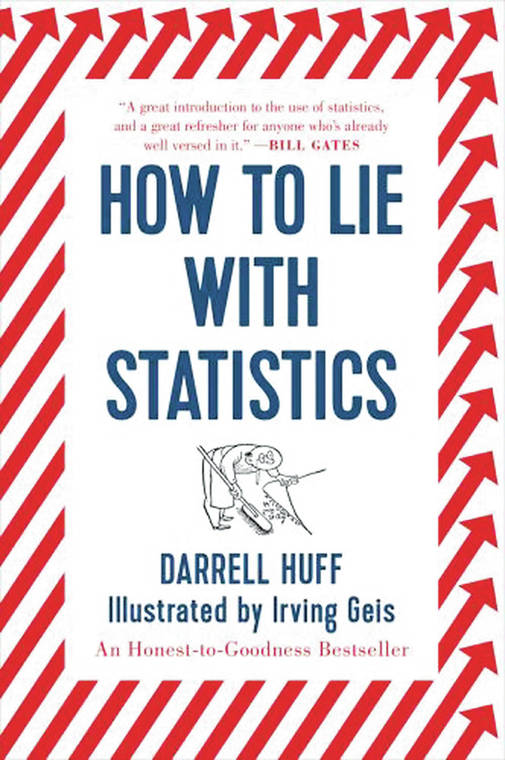This is one of our favorite books. Nowadays, we are inundated with a continuous stream of information from television media outlets, social media, print media, politicians, companies, and even community word-of-mouth. More often than not, attached to all this is a torrent of statistics. And as the regularly-repeated adage goes, “Numbers don’t lie.” True. But “people” can lie with numbers. “How To Lie With Statistics” is a short read that has been around for generations, written by Darrell Huff, with poignant illustrations by Irving Geis. Indeed, even Bill Gates, Atlantic magazine, and The New York Times have all praised the simple-yet-profound truthful wisdom it contains.
This is one of our favorite books. Nowadays, we are inundated with a continuous stream of information from television media outlets, social media, print media, politicians, companies, and even community word-of-mouth. More often than not, attached to all this is a torrent of statistics. And as the regularly-repeated adage goes, “Numbers don’t lie.” True. But “people” can lie with numbers. “How To Lie With Statistics” is a short read that has been around for generations, written by Darrell Huff, with poignant illustrations by Irving Geis. Indeed, even Bill Gates, Atlantic magazine, and The New York Times have all praised the simple-yet-profound truthful wisdom it contains.
And what a year to read it. With the upcoming 2020 presidential election and the seemingly-endless COVID-19 pandemic happening concurrently, we hear numbers and percentages tossed our way all the time, presented to us with the sturdy, indefatigable claim of being “scientifically derived.”
For example, how does one reconcile “30% unemployment” with “1,800,000 new jobs added?” Who’s telling the truth? What numbers are we not being shown? What data or inputs were used? How does one even begin to know? Huff has many fun examples of how something may be “numerically correct” and “factually false” at the same time, including how visual graphs (which are used on a frequent basis to make a better impact) can be presented and skewed in their setup to make certain things seem greater or lesser, depending on what the intention is. That spike at the end of the graph? You might never look at it the same again after this book. “How To Lie With Statistics” is honestly a book that we think should be required reading in every school. It will cause you to never take a statistic for granted again. Skepticism guaranteed.
•••
Ed Justus is the owner of Talk Story Bookstore in
Hanapepe. Yuriko and Ed Justus are Kalaheo residents. Talk Story Bookstore is open weekdays 11 a.m. to 3 p.m., and 11 a.m. to 4 p.m. Saturdays.

Subscribe today for unlimited access.
Already a subscriber?
Login
Not ready to subscribe?
Register for limited access.
If you have a print subscription but require digital access,
activate your account.






Its rather comical Gates would endorse this book… Like an overly confident chess player he is willing to show people how he plays the game because he knows he has already won.
Yet is he really overly confident? look at how many already vaccinated.
How many channels / videos did Youtube and Facebook already Demonetize and WILL continue doing so?
There’s an unfortunate scenario in which he has already won, even if we are on to him now, the damage caused is irreversible. It’s going to take us years to get back to where we were.